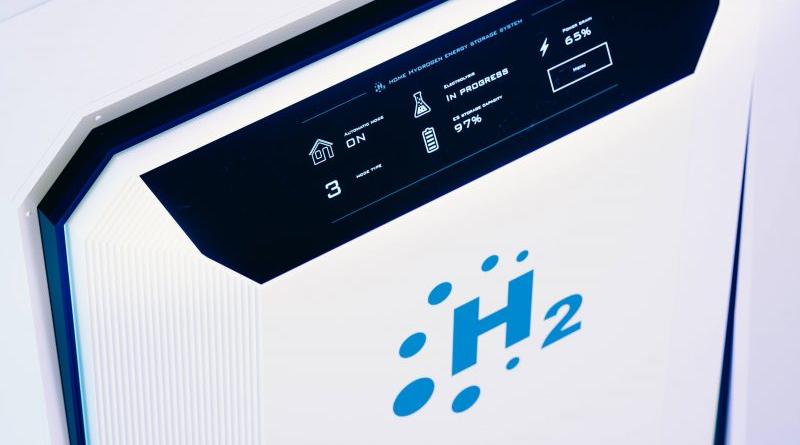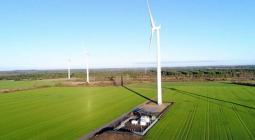The fossil fuels heating industry is trying to push hydrogen boilers as renewable, but at the moment only a very small fraction of hydrogen is green. To halt the greenwashing of heating technologies, legislative clarity is needed, writes Jan Rosenow.
The heating industry is in turmoil. The need to decarbonise energy demand as well as the gas crisis caused by the war in Ukraine have led to governments around Europe setting phase-out dates for the installation of fossil fuel heating systems — something also being considered by EU legislators.
Despite the urgent need to decarbonise and remove fossil fuels, there is a concerning pushback that attempts to preserve the status quo.
Enter ‘hydrogen-ready’ or ‘renewable fuel-ready’ boilers; the fossil fuel heating industry’s latest attempt to slow down clean heating.
During negotiations of the EU’s Energy Performance of Buildings Directive (EPBD) some members of the European Parliament proposed that “boilers certified to run on renewable fuels … shall not be considered fossil heating systems”.
‘Renewable fuels’ could include hydrogen or biomass-based fuels, such as biogas and bio-oil – both seen to have only a very limited growth potential.
Rather than require all new buildings to be fitted with clean heating systems, such as heat pumps, or be connected to district heating, the proposal would allow the installation of fossil fuel heating systems as long as they could, in theory, one day also run on renewable fuels.
The problem is that a hydrogen-ready boiler is a fossil fuel boiler as long as there is no green hydrogen to supply it. Currently only 0.04% of global hydrogen production is green hydrogen.
Hydrogen or renewable ready boilers have been proposed by the incumbent EU heating industry despite the fact that the EU’s own analysis points towards primarily heat pumps and district heating as the core clean heating technologies.
Calling it ‘clean’ doesn’t make it so
We have seen such approaches before: when the coal industry came under pressure to reduce emissions it promised ‘clean coal’ using carbon capture and storage (CCS).
Significant policy support was subsequently offered, and clean coal attracted a lot of attention from policymakers and the media. The idea was to build CCS-ready coal plants.
However, after years of pilot projects and substantial public investment in coal power plants with CCS, only a single commercially operating facility remains – one 115 megawatt unit of the Boundary Dam Power Station in Saskatchewan, Canada.
Its primary purpose is to provide a low-cost source of carbon dioxide to the Weyburn Oil Field for enhanced oil recovery. In the U.S., after $163 million in public subsidies awarded through the American Recovery and Reinvestment Act, the last commercially operating coal power plant with CCS, Petra Nova, retired in 2021.
The European Union spent €587 million to support the development of clean coal and has little to show for it. If we can learn anything from the history of clean coal, then it is this: great expectations and promises by incumbent industries do not guarantee good outcomes.
We already know what will work and what won’t’
We already know that heating homes with hydrogen is a more expensive, less efficient and more environmentally harmful option than proven alternatives. More than 30 independent studies have come to this conclusion.
Green hydrogen from renewable electricity – the only zero-carbon form of hydrogen – will already stretch production for use in sectors where less costly alternatives are unavailable.
We also know that concerns over resource availability and sustainability limit the growth potential of any biomass-based heat sources. This is indeed recognised within the commission’s own impact assessments behind the Fitfor55 package.
The idea that we will have abundant green hydrogen or clean bioenergy supplies sufficient to replace fossil fuels for heating is fanciful. Yet off-the-shelf heat pumps and district heating can reduce primary energy demand and greenhouse gas emissions immediately and cost-effectively.
The International Energy Agency has said that after 2025, we should stop installing fossil fuel boilers. There is no guarantee, indeed it seems quite unlikely, that hydrogen will ever flow through gas distribution networks and biogas and bio-oil will always be limited.
Therefore, most fossil fuel heating systems installed are likely to always run on fossil fuels. Proven technologies, such as heat pumps and clean district heating, immediately reduce carbon emissions, and with the grid and heating supplies getting cleaner every year, those emission reductions will only increase going forward.
The EPBD could be the solution
We’re still in the middle of an energy crisis primarily linked to gas prices. With so much gas used for heating, the EU has the chance to course-correct this obviously problematic issue with the current EPBD.
Providing the energy industry and member states with clarity and direction on heating is vital to ensure investment is driven into the rapid deployment of actual clean heating technologies. The proposed greenwashing of fossil fuel boilers risks undermining progress in the buildings sector where rapid progress is needed.






